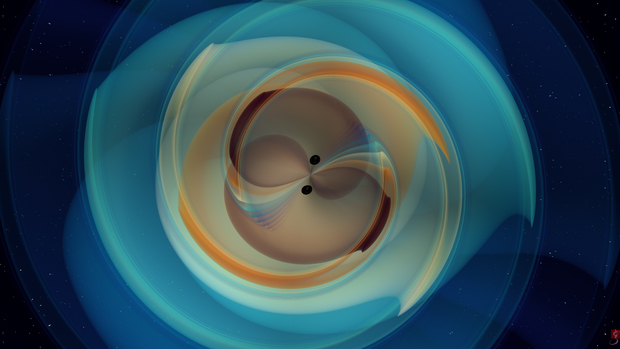International research team detects binary black hole merger
Posted by Velvet Hasner

Still image from a numerical simulation of two black holes that inspiral and merge, emitting gravitational waves. The black holes have large and nearly equal masses, with one only 3% more massive than the other. The simulated gravitational wave signal is consistent with the GW190521 observation made by the LIGO and Virgo. (Credit: N. Fischer, H. Pfeiffer, A. Buonanno (Max Planck Institute for Gravitational Physics), Simulating eXtreme Spacetimes (SXS) Collaboration)
Researchers from Missouri S&T’s Institute for Multi-messenger Astrophysics and Cosmology are among a team of international scientists who participated in the detection of a signal from the most massive black hole merger yet observed in gravitational waves.
The S&T researchers include:
- Dr. Marco Cavaglia, professor of physics
- Dr. Sudarshan Karski, postdoctoral researcher in physics
- Kentaro Mogushi, a doctoral student in physics.
The event observed by the LIGO Scientific Collaboration and the Virgo Collaboration produced the first clear detection of a black hole with a mass between 100 and 1,000 times that of the sun. It is labeled GW190521.
The S&T researchers are listed among the authors in the discovery papers published in Physical Review Letters and The Astrophysical Journal Letters.
